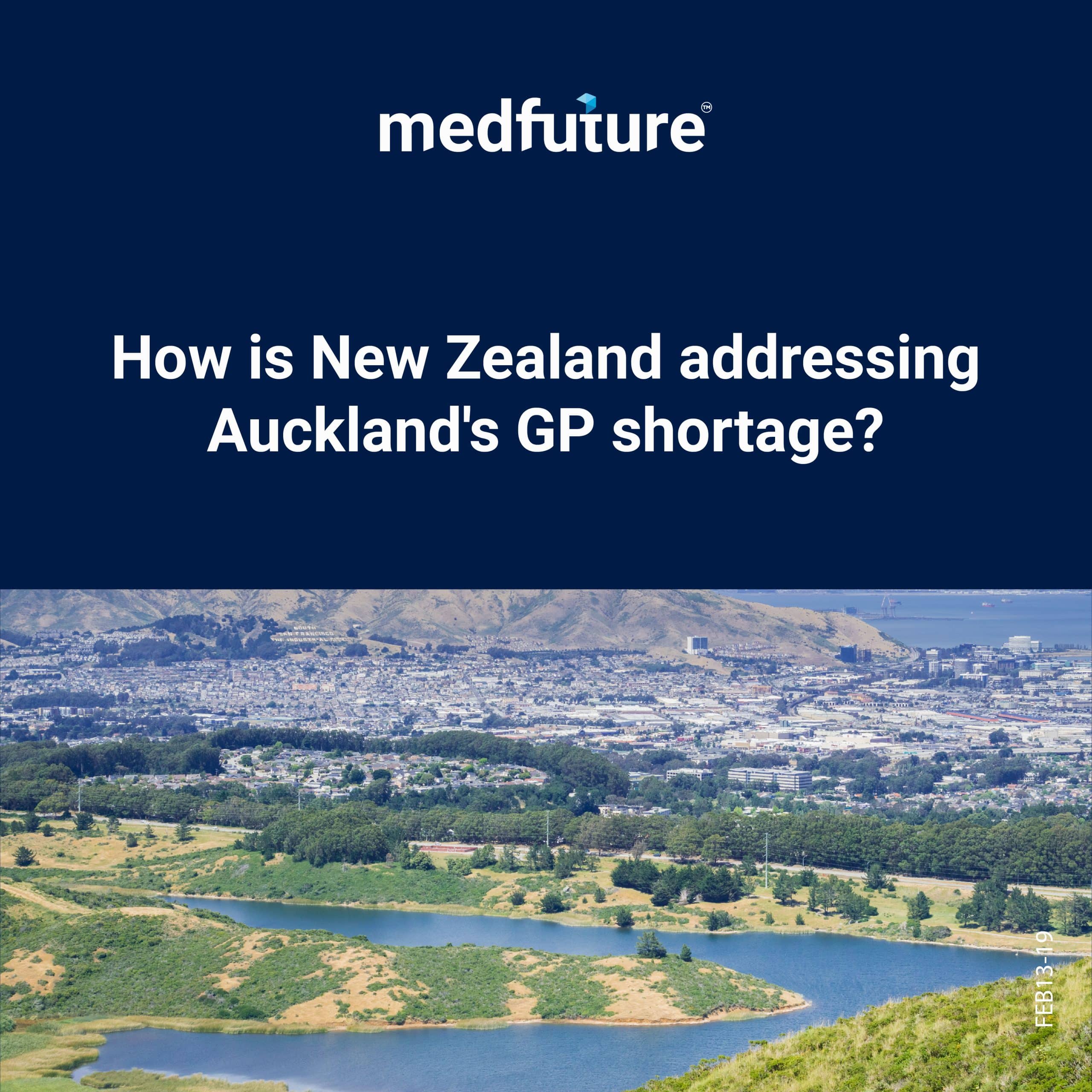Australia’s unique cultural tapestry is woven with the tales, traditions, and tenacity of its Aboriginal communities. Despite their deep connection to their land and heritage, these communities frequently confront major disparities in health that need attention and targeted solutions. This article dives into the importance of improving Aboriginal health in Australia and examines various programs that have been established to meet the particular health difficulties that these communities confront.
Medfuture Medical and Healthcare Recruitment, a pillar of support for healthcare professionals, has been playing a vital role in linking healthcare professionals with opportunities that not only match their expertise but also align with a broader vision of community-centric care. As we unveil the narrative of advancing Aboriginal health, it is essential to recognise the seamless alignment between Medfuture’s core mission and the overarching goal of advancing sustainable and culturally sensitive healthcare solutions.
We will explore innovative programs shaping the healthcare landscape for Australia’s Aboriginal communities.
Securing access to suitable and timely healthcare across the lifespan is crucial for enhancing health outcomes among Aboriginal communities. While there have been advancements in certain aspects of health system performance tailored for Aboriginal Australians over the past decade, persistent obstacles continue to impede their access to healthcare. This is evident in the existing gaps and discrepancies in access levels when compared to non- Aboriginal Australians
Enhancements in the performance of the health system for Aboriginal Australians over the past decade encompass
Growth in the number of facilities delivering primary healthcare services to Aboriginal Australians.
An uptick in Aboriginal women seeking antenatal care within the initial trimester of pregnancy.
Higher immunisation rates among Aboriginal children, with a substantial majority achieving full immunization by the age of five.
Increased rates of Aboriginal health assessments and the utilisation of general practitioner (GP) management plans for chronic conditions.
Improved accessibility to hospital procedures, although Aboriginal Australians exhibit a lower likelihood than their non- Aboriginal counterparts of receiving medical or surgical interventions
Evolution of health system outcomes for Aboriginal has shown distinct trends over time
01.Antenatal care
Antenatal care is especially crucial for Aboriginal mothers since they are more likely to have preterm or low birthweight babies. Other risk factors and problems that Aboriginal Australian women face include anaemia, low nutritional status, chronic disease, hypertension, diabetes, vaginal and urinary tract infections, smoking, and high levels of psychological stresses.
Over the period from 2012 to 2019, there was a notable rise in the proportion of Aboriginal mothers engaging in antenatal care during the first trimester, increasing from 50% to 68%.
The percentage of Aboriginal mothers accessing antenatal care in the first trimester was 8.0 percentage points lower than that of non- Aboriginal mothers, based on age-standardised rates.
Regionally, the prevalence of Aboriginal mothers initiating antenatal visits during the first trimester was highest in Outer regional areas (71%) and lowest in Remote areas (63%) in 2019.
Aboriginal mothers who had their initial antenatal care visit during the first trimester displayed a lower likelihood of giving birth to low birthweight babies (8.9%), in contrast to those whose first visit occurred after 20 weeks of pregnancy or those who did not have any antenatal visits (14%) in 2019.
02. Immunisation
Immunisation plays a crucial role in significantly decreasing the incidence and fatality associated with vaccine-preventable diseases. The implementation of childhood vaccination for diphtheria commenced in Australia in 1932, while the widespread adoption of vaccines to safeguard against tetanus, pertussis (whooping cough), and poliomyelitis became prevalent in the 1950s.
91% of Aboriginal children aged 1 were fully immunised in 2022.
As of May 31, 2023, 14% of Aboriginal adults, totalling 70,241 individuals, remained unvaccinated against COVID-19.
In 2021, 73% of Aboriginal girls and 66% of Aboriginal boys had completed a full dose of the human papillomavirus virus (HPV) vaccine by the age of 15.
For the year 2021, influenza vaccination rates among Aboriginal Australians varied: 43.5% of those aged 50–64, 64.6% for those aged 65 to 74, and 67.7% for individuals aged 75 and over.
03.Early detection and early treatment
Early disease detection and treatment is both more effective and efficient than late disease treatment. Early diagnosis and treatment of some diseases can result in a cure, while for others, it can slow the onset of the disease and lower the chance of death.
For example, Health checks, Cancer screening, Breast screening and Cervical screening.
Between 2009 to 2010 and 2018 to 2019, the utilisation of Aboriginal-specific health assessments by Aboriginal individuals increased from 68 per 1,000 to 297 per 1,000.
In the year 2019–2020, 35% of Aboriginal women aged 50 to 69 underwent breast cancer screening, a notable increase from 29% in 2010 to 2011, when considering age-standardised rates.
As of December 2018, 43% of eligible Aboriginal female regular clients at Aboriginal-specific primary health-care services had undergone cervical screening tests (Pap test or HPV test) within the preceding five years.
The estimated participation rate in the National Bowel Cancer Screening Program for Aboriginal Australians aged 50–74 was 35% in the year 2019 to 2020.
Chronic disease management
Chronic diseases, characterised by enduring health impacts and socio-economic repercussions, significantly affect the quality of life. Among Aboriginal people, chronic diseases stand as the primary contributors to illness, disability, and mortality, constituting an estimated 70% of the health disparity. Managing chronic diseases effectively holds the potential to prevent disease progression, enhance quality of life, extend life expectancy, and reduce the necessity for high-cost interventions, resulting in overall cost savings. As such, effective chronic disease management emerges as a pivotal factor in achieving the target of closing the life expectancy gap between Aboriginal and non- Aboriginal Australians within a generation.
Between 2009 to 2010 and 2017 to 2018, there was a notable increase in the rate of MBS claims by Aboriginal people for team care arrangements, rising from 55 to 142 per 1,000, and GP management plans, which increased from 69 to 142 per 1,000.
In 2017 to 2018, Aboriginal Australians claimed MBS for team care arrangements at a rate 1.5 times higher than that for non-‑ Aboriginal Australians, while GP management plans were claimed at a rate 1.4 times higher.
In 2018 to 2019, 97% of Aboriginal Australians self-reporting circulatory conditions stated that they had their blood pressure checked in the last 12 months.
For regular clients of Aboriginal-specific primary health-care organisations with type 2 diabetes, 49% underwent an HbA1c test in the six months to December 2018.
The rate of MBS claims for Aboriginal patients accessing specialist providers was nearly half the rate of non-‑ Aboriginal patients, with rates of 598 per 1,000 and 1,070 per 1,000, respectively.
Access to hospital procedures
Equitable access to hospital-based medical and surgical procedures is a fundamental principle for Australians dealing with illnesses that can be effectively treated through these interventions. However, historical studies reveal a concerning pattern among Aboriginal people. While this population is more like the hospitalisation compared to other Australians, they exhibit a lower likelihood of receiving medical or surgical procedures during their hospital stays. Importantly, these disparities are not consistently explained by factors such as diagnosis, age, sex, or place of residence. Notably, these discrepancies are evident in public hospitals but not as pronounced in private hospital settings.
From the decade leading up to 2018 to 2019, there was a 14% rise in hospitalisations of Aboriginal and Torres Strait Islander people where a recorded procedure took place.
Between July 2017 and June 2019, 63% of hospitalisations (excluding dialysis) for Aboriginal Australians involved a recorded procedure.
In the same period (July 2017 to June 2019), the proportion of hospitalisations for Aboriginal Australians with a recorded procedure varied from 55% in the Northern Territory to 71% in Tasmania.
From July 2016 to June 2019, 66% of hospital events for acute coronary syndrome among Aboriginal adults aged 18–34 incorporated coronary angiography and/or revascularisation procedures.
In conclusion, this comprehensive article sheds light on the critical importance of addressing health disparities among Aboriginal communities in Australia. It underscores the persistent challenges these communities face in accessing healthcare, despite significant efforts and advancements in various health programs.
Medfuture for healthcare staffing solutions! The narrative also highlights the role of Medfuture Medical and Healthcare Recruitment in aligning healthcare professionals with the mission of community-centric care. The article delves into key areas such as antenatal care, immunization, early detection, chronic disease management, and equitable access to hospital procedures. While improvements have been noted, the article emphasises the need for continued efforts to bridge existing gaps and achieve health equity for Aboriginal Australians, ultimately contributing to the goal of closing the life expectancy gap between Aboriginal and non- Aboriginal populations within a generation.





